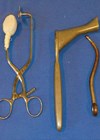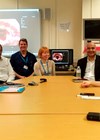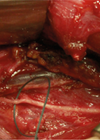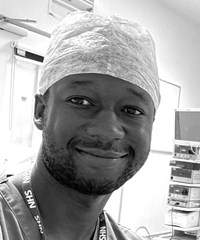ENT features
Treating voice disorders in singers
There are few ENT surgeons who have as much insight into singers’ problems as Nick Gibbins. A good knowledge of working patterns, repertoire and the physiology of ‘vocal athletes’ is essential. He shares a few thoughts with us. When deciding...
Reflux – diagnostic tools and special considerations in singers
Depending on your point of view, laryngopharyngeal reflux (LPR) is either ubiquitous or is over-diagnosed. Are singers more prone to LPR? What are the best tests? Mark Watson and Jane Shaw tell us more. Laryngopharyngeal reflux (LPR: the backflow of...
The pioneers of endoscopy and the sword swallowers
Adolf Kussmaul drew inspiration from an unlikely source to further the development of endoscopy… The early pioneers of airway endoscopy and oesophagoscopy were bedevilled by two major and seemingly insurmountable problems. One was the paucity of light sources, with reliance...
The ENT operating theatre viewed down the retrospectoscope
We learn much of our future by looking at our past; Douglas MacMillan provides us with a fascinating glimpse into his years as a junior doctor. The operating theatre was a somewhat alien environment in the late 1960s: theatre sisters...
Innovation in medical product technologies
There is a point in all innovation projects where the clinician has exhausted their knowledge and needs expert help to create a prototype. Mark Prince, Design Engineer, discusses this phase of the project and how engineers’ analytical thinking brings a...
History of innovation in ENT
Innovation seems to have been in the strapline of every meeting, conference and course for the last few years. You would be forgiven for thinking it is a new a concept, but as Neil Weir beautifully details, innovation has been...
The role of the multidisciplinary team in laryngology and airway – the Charing Cross experience
As the National Centre for Airway Reconstruction, the Charing Cross laryngology MDT provides expert care to patients with airway problems as well as voice and swallowing disorders. In this article, the team explain their raison d’etre and why the MDT...
The multidisciplinary voice clinic
In his inimitable way, Nick Gibbins tells us why the voice clinic is the highlight of his week – and his very own field of dreams. The voice clinic has come a long way in the last 40 years. The...
Alfred Alexander: a life in ENT, but mainly music
Your own voice clinic may be filled with teachers, elderly clergy and badly trained pub singers, but it wasn’t always like this... When I was first invited to write an article about opera and ENT for this edition of ENT...
Laryngology: past, present and future
Two laryngological authorities trace the history of laryngology, from ancient Rome to the modern day. The structure of the vocal folds was a matter of conjecture until the renaissance when anatomists such as Andreas Vesalius and Julius Casserius demonstrated the...
An update on laryngeal reinnervation
Laryngeal paralysis remains very difficult to treat, but reinnervation offers many attractions. Laryngeal paralysis presents a unique and varied problem that requires a patient centred approach and a range of treatment options depending on laryngeal and patient factors. There is...
Demystifying laryngology in the era of examination and collaboration
In the field of laryngology, perhaps more than in any other area of ENT, there has been a philosophical shift (as well as a technological one) in the approach of clinicians caring for patients. Albert Merati explains. Progress in laryngology...




















